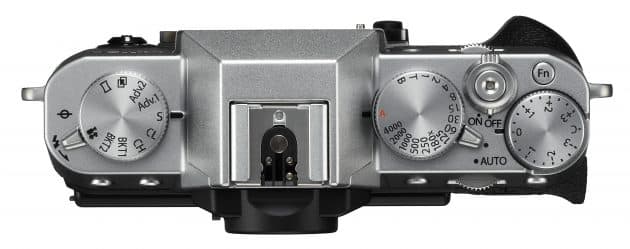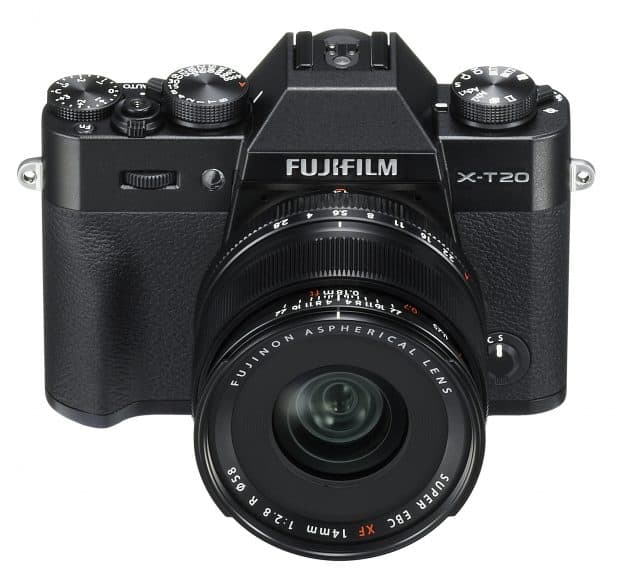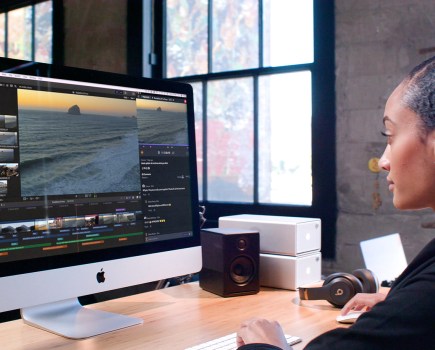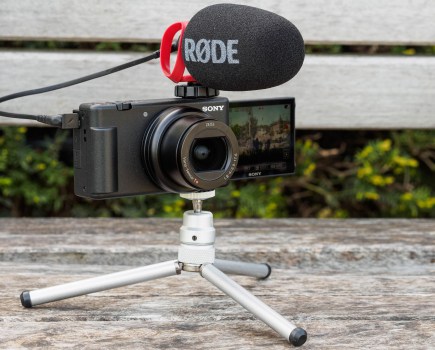The Video Mode examines the key video features of Fuji’s new X-T20 APS-C mirrorless camera
A shade over six months after it announced the X-T2 camera Fujifilm recently took the wraps off its ‘Mini Me’, the X-T20. Although the X-T20 is essentially an upgrade of the X-T10 the good news is it has incorporated many ‘trickle-down’ features from the X-T2. So, how does the X-T20 measure up for shooting video and what are its pros and cons?
First up, the X-T20’s sensor is the same 24.3 megapixel X-Trans CMOS III type that’s found in the X-T2, whilst the newer camera also keeps the same X-Processor Pro as seen in the X-T2. So the ‘engine’ of the two cameras is the same.
4K and Full HD
Like the X-T2, which was the first X-series camera to offer 4K video, the X-T20 will offer filmmakers Ultra 4K (at 3840×2160), not cinema 4K, video with frame rates of 24p/23.98p, 25p and 29.97p at 100Mbps internally to UHS Speed Class 3 SD cards. You can also shoot up to 1080/59.94P internally.
The slight downside of the X-T20 is that it only has one UHS-I compatible card slot, as against two UHS-II compatible card slots on the X-T2, and the camera’s internal recording is limited to approximately 10 minutes in 4K, 15 minutes in Full HD and 30 minutes at 720p (HD).
Whilst in video mode the camera’s aperture values, shutter speeds and ISO settings can be set manually and the X-T20 has a new dedicated Video setting on the top plate’s drive dial for easy access to the video mode.

The X-T20’s top plate with a new video mode accessible via the drive dial on the left hand side
Film simulation modes
Another feature from the X-T2 also found in the X-T20 is Fuji’s film simulation modes (mainly based on Fuji slide films), which allow users to easily add in a series of ‘looks’ to their footage. It’s worth noting that use of the film simulation modes does partially come at the expense of overall dynamic range. The film simulation modes available include Provia, Velvia, Astia, Classic Chrome and what’s known as ACROS (a black-and-white ‘look’).
Unfortunately the X-T20 does not retain the F-log colour mode seen in the X-T2, which basically means filmmakers will have less freedom and latitude when it comes to colour grading any X-T20 footage in post-production.
Clean output
Like the X-T2 the X-T20 can also output a clean 8-bit 4:2:2 4K signal over HDMI for external recording and this can be triggered using the shutter button when used with a compatible external recorder, such as those from the likes of Blackmagic or Atomos.
Audio & autofocus
For audio there is a 2.5mm microphone input jack (which needs an adapter) but, unfortunately, there’s no headphone jack to allow for audio monitoring. On the X-T2 the headphone jack was located on that camera’s accessory battery grip but as the X-T20 doesn’t have a battery grip option there doesn’t appear to be any simple solution to this.
The autofocus system is said to be improved over the X-T10 thanks to a revamped AF algorithm that is said to boost the camera’s start-up time and AF performance. The tilting (it tilts up or down, not sideways) rear LCD monitor is a 3-inch, 1.04 million dot touchscreen which offers ‘Touch AF’ if you want to change the focus area and refocus whilst recording video.
 Fujifilm’s lens range for its X-mount cameras is now quite impressive with 23 optics – although most of its lenses focus in the opposite direction to Canon and cine lenses – and lens adapters should allow you to attach a wide range of other lenses, including the movie industry’s ‘standard’ PL mount lenses.
Fujifilm’s lens range for its X-mount cameras is now quite impressive with 23 optics – although most of its lenses focus in the opposite direction to Canon and cine lenses – and lens adapters should allow you to attach a wide range of other lenses, including the movie industry’s ‘standard’ PL mount lenses.
First thoughts
Like many of the Fujifilm X-series cameras the X-T20 looks great and looks like it will handle well. The other key decider between the X-T2 and the X-T20 may be price – the X-T20 is slated at £799 body only whilst the X-T2 will currently set you back around £1399. The video functions in the X-T20 are solid, but not groundbreaking, yet if you are already in the X-series system and are considering developing your 4K filmmaking skills with a compact, light (383g with battery and memory card) and solidly-specced camera the X-T20 is well worth a look.






